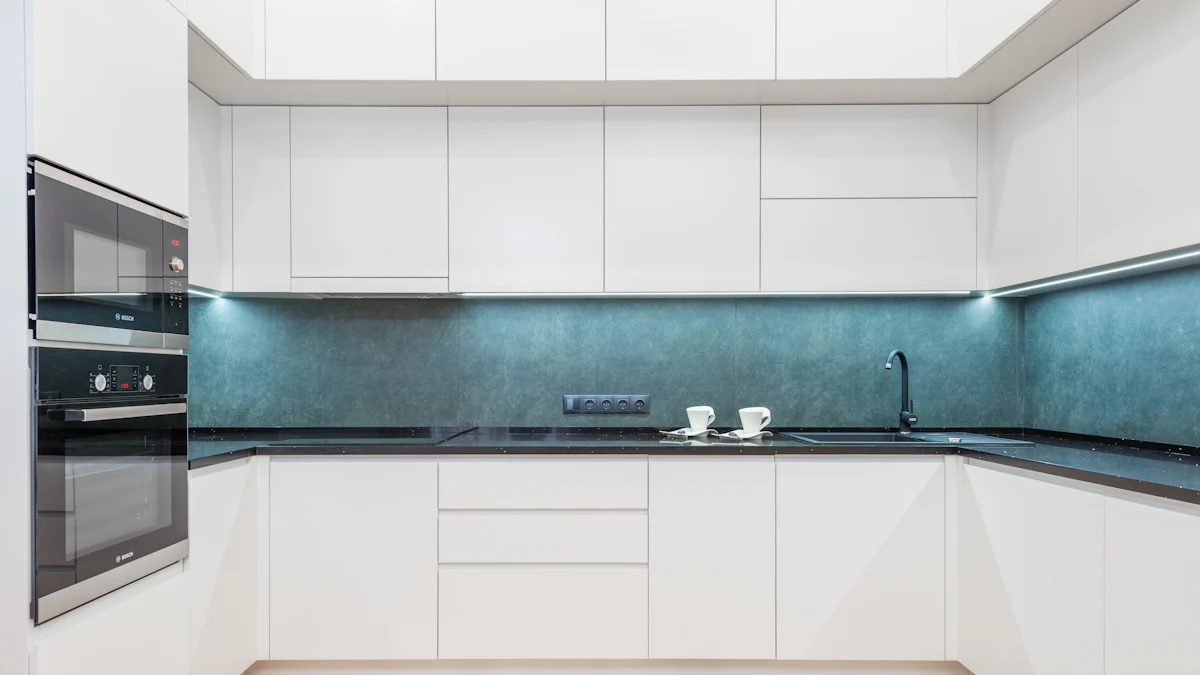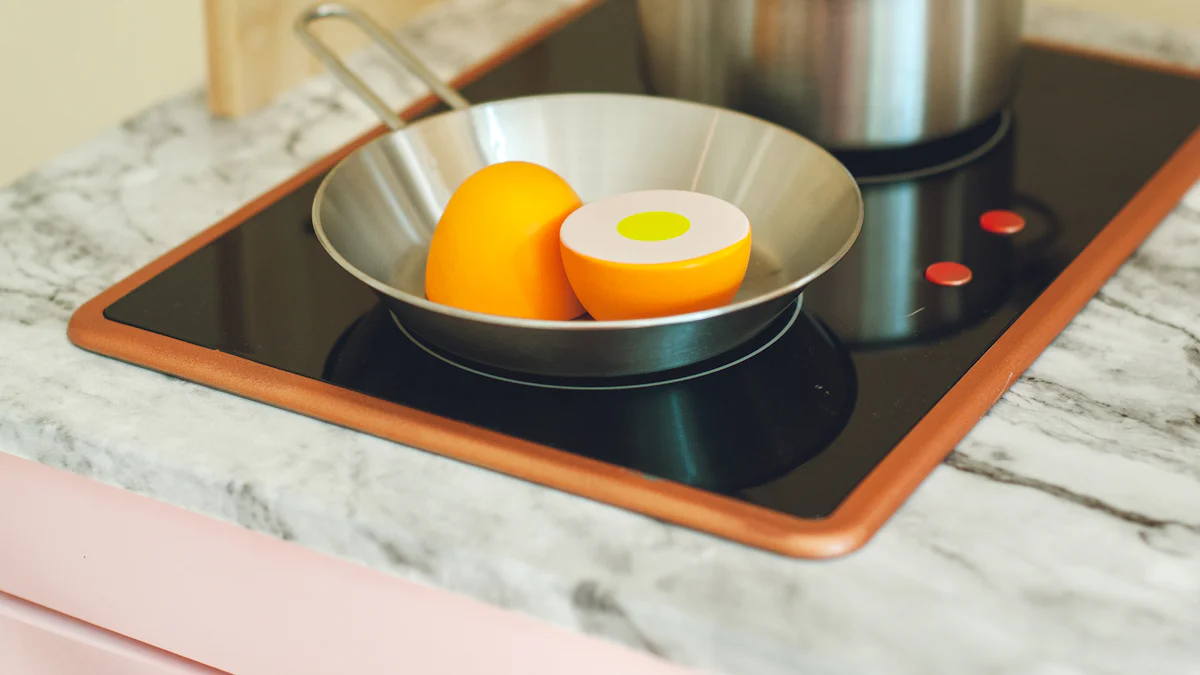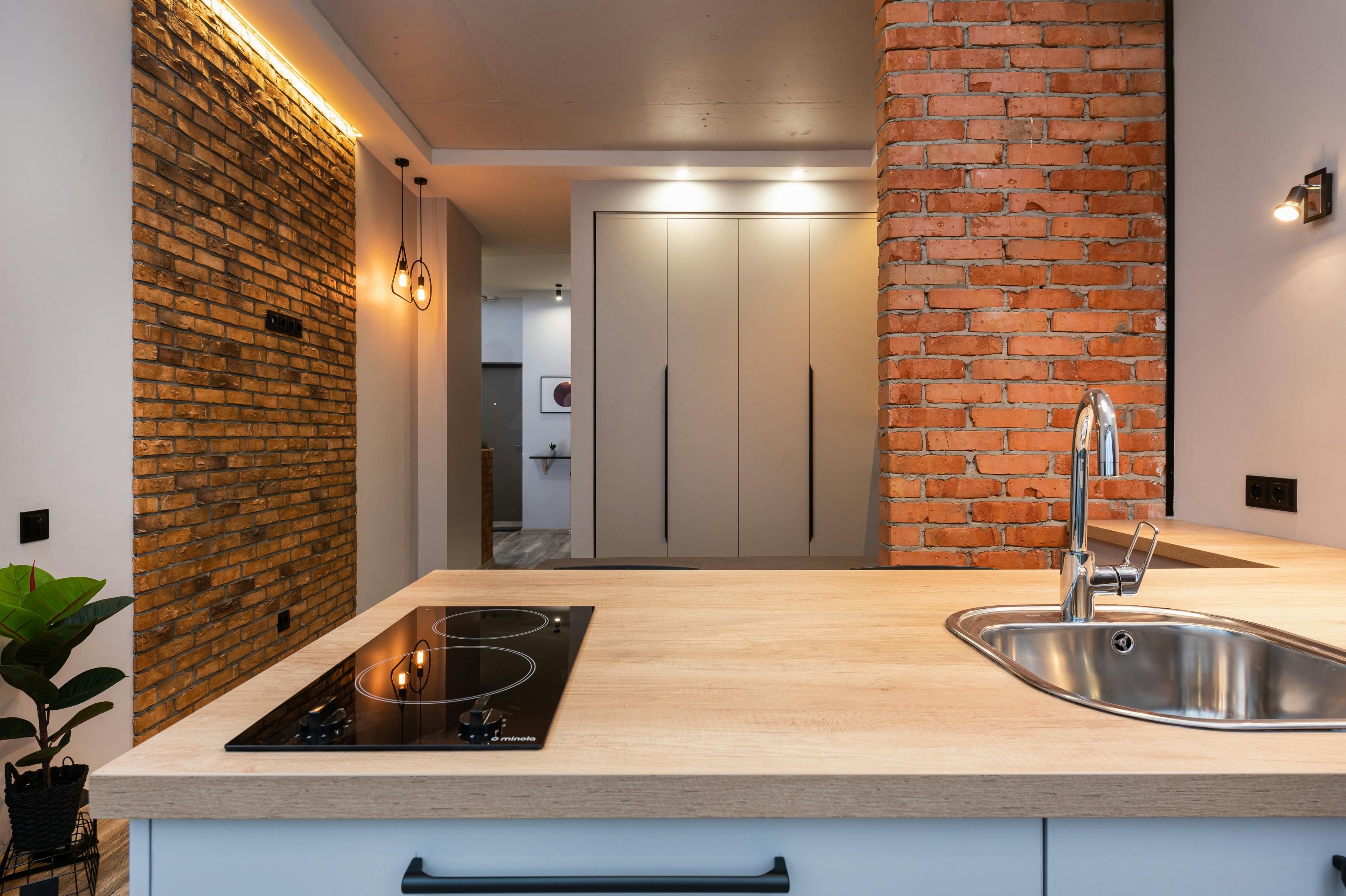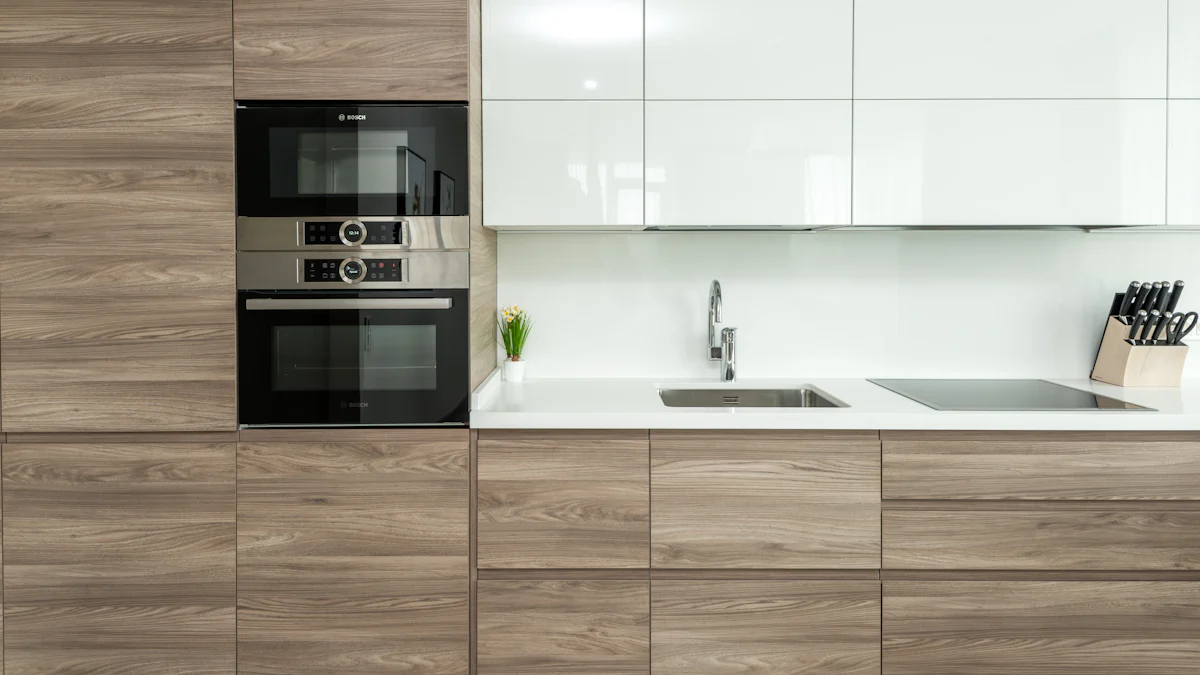How an Induction 2 Burner Cooktop Boosts Cooking Efficiency

An induction 2 burner cooktop transforms your kitchen into a hub of cooking efficiency. You experience faster cooking times, as induction technology can boil water 20-40% quicker than gas and traditional electric cooktops. This efficiency doesn't just save time; it also conserves energy. Induction cooktops are up to 15% more efficient than standard electric stoves and three times more efficient than gas stoves. By reducing heat loss and offering precise temperature control, induction cooktops ensure that you cook meals swiftly and economically, making them an ideal choice for modern kitchens.
Key Takeaways
Induction cooktops cook food 20-40% faster than traditional gas and electric stoves, saving you valuable time in the kitchen.
They are up to 15% more energy-efficient than standard electric stoves, helping you lower your utility bills and reduce your carbon footprint.
Safety is enhanced with features like a cool-to-touch surface and automatic shut-off, making induction cooktops a safer choice for families.
Using the right magnetic cookware, such as cast iron or certain stainless steel pots, is essential for optimal performance with induction cooktops.
Regular cleaning and maintenance of your induction cooktop can extend its lifespan and ensure consistent cooking efficiency.
Induction cooking allows for precise temperature control, enabling instant heat adjustments for perfect cooking results every time.
Upgrading to an induction cooktop may involve an initial investment, but the long-term savings and cooking benefits make it a worthwhile choice.
Understanding Induction 2 Burner Cooktop Technology

How Induction Heating Works
Induction heating revolutionizes the way you cook by using electromagnetic fields to generate heat directly in your cookware. This method stands out because it heats the pot or pan itself, not the stovetop surface.
Electromagnetic Fields and Direct Heating
Induction cooktops employ electromagnetic energy to create a magnetic field. When you place a compatible pot or pan on the induction stovetop, this field induces an electric current in the metal, producing heat. This process ensures that the heat goes directly into the cookware, minimizing wasted energy. Unlike traditional methods, where heat dissipates into the surrounding air, induction cooking focuses energy precisely where it's needed.
Benefits of Direct Heat Transfer
Direct heat transfer offers numerous advantages. First, it enhances cooking efficiency by reducing the time it takes to heat your pots and pans. You can boil water or sear meats much faster than with gas or electric stoves. Second, it improves safety. The cooktop surface remains cool to the touch, reducing the risk of burns. Lastly, it provides precise temperature control, allowing you to adjust heat levels instantly for consistent cooking results.
Energy Efficiency of Induction Cooktops
Induction cooktops excel in energy efficiency, making them a smart choice for eco-conscious cooks.
Reduced Energy Consumption
Induction technology uses energy more efficiently than traditional cooking methods. Studies show that up to 84% of the electricity generated by an induction cooktop is used for cooking food. This efficiency surpasses that of gas stoves and standard electric cooktops. By directing energy straight to the cookware, induction cooktops minimize energy loss, helping you save on utility bills.
Faster Cooking Times
The speed of induction cooking is another significant benefit. Because the heat is generated directly in the cookware, you experience faster cooking times. Whether you're boiling water or frying vegetables, induction cooktops deliver quick results. This speed not only saves you time but also enhances your overall cooking experience.
Comparing Induction Cooktops with Traditional Methods

When you compare induction cooktops to traditional cooking methods, two key aspects stand out: precise temperature control and enhanced safety features. These elements not only improve your cooking experience but also ensure a safer kitchen environment.
Precise Temperature Control
Induction cooktops offer unparalleled precision in temperature control, which is crucial for achieving even cooking results.
Instant Heat Adjustments
With induction technology, you can adjust the heat instantly. This immediate response allows you to switch from a rolling boil to a gentle simmer in seconds. Unlike gas or electric stoves, where you wait for the burner to heat up or cool down, induction cooktops respond to your commands right away. This feature is particularly beneficial when cooking delicate dishes that require precise temperature management.
Consistent Cooking Results
The ability to maintain a steady temperature ensures consistent cooking results every time. Induction cooktops distribute heat evenly across the cookware, preventing hot spots and ensuring that your food cooks uniformly. Whether you're searing a steak or simmering a sauce, you can trust that the heat will remain constant, leading to perfectly cooked meals.
Safety Features of Induction Cooktops
Safety is a top priority in any kitchen, and induction cooktops excel in this area with several built-in features.
Cool-to-Touch Surface
One of the standout safety features of induction cooktops is their cool-to-touch surface. Since the heat is generated directly in the cookware, the cooktop itself remains relatively cool. This reduces the risk of burns and makes the cooking process safer, especially in households with children.
Automatic Shut-Off
Induction cooktops also come equipped with an automatic shut-off feature. If a pot or pan isn't detected, the cooktop will turn off automatically. This prevents accidents and conserves energy. Additionally, if the cookware becomes too hot, the cooktop will self-regulate or shut down, further enhancing safety.
By choosing an induction cooktop, you not only benefit from precise temperature control and consistent cooking results but also enjoy a safer cooking environment. These advantages make induction cooktops a superior choice compared to traditional methods.
Practical Tips for Maximizing Efficiency with an Induction Cooktop
To achieve efficient cooking with your induction cooktop, selecting the right cookware and maintaining your appliance are crucial steps. These practices ensure that you get the most out of your cooking method, enhancing both performance and longevity.
Choosing the Right Cookware
The type of cookware you use significantly impacts the efficiency of your induction cooktop. Here's what you need to know:
Importance of Magnetic Cookware
Induction cooktops rely on magnetic fields to generate heat. Therefore, using proper cookware with a magnetic base is essential. Cast iron skillets and Dutch ovens are excellent choices due to their strong magnetic properties. Many stainless steel pots and pans also work well, provided they have a magnetic base. You can easily test your cookware by seeing if a magnet sticks to the bottom. If it does, it's suitable for induction cooking. Avoid using cookware made solely of glass, ceramic, copper, or non-magnetic aluminum, as these materials won't heat effectively on an induction cooktop.
Optimal Cookware Size and Shape
The size and shape of your cookware also play a role in efficient cooking. Ensure that the base of your pot or pan matches the size of the burner. This alignment maximizes the contact area, allowing for even heat distribution and reducing energy waste. Using cookware with a flat bottom helps maintain consistent contact with the cooktop surface, further enhancing cooking efficiency.
Maintaining Your Induction Cooktop
Regular maintenance of your induction cooktop ensures its optimal performance and extends its lifespan. Here are some tips to keep your appliance in top condition:
Regular Cleaning and Care
Keeping your induction cooktop clean is vital for efficient cooking. After each use, wipe the surface with a soft cloth and soapy water to remove any spills or stains. Avoid using abrasive cleaners or scouring pads, as they can scratch the glass surface. Regular cleaning prevents residue buildup, which can interfere with the cooktop's performance.
Troubleshooting Common Issues
Understanding how to troubleshoot common issues can save you time and frustration. If your cooktop doesn't recognize your cookware, check if the pot or pan is magnetic and properly centered on the burner. If the cooktop shuts off unexpectedly, ensure that the cookware is not too small for the burner. Familiarize yourself with the cooktop's safety features, such as automatic shut-off, to understand how they function and when they might activate.
By choosing the right cookware and maintaining your induction cooktop, you can enjoy efficient cooking and make the most of this advanced cooking method. These practices not only enhance your cooking experience but also contribute to energy savings and environmental benefits.
Real-World Applications and Benefits of Energy-Efficient Cooking

Induction cooktops offer a range of real-world applications that enhance your cooking experience while promoting sustainability. By adopting energy-efficient cooking methods, you not only save energy but also contribute to a more sustainable future.
Time-Saving Cooking Techniques
Induction cooktops excel in reducing cooking time, allowing you to prepare meals more efficiently.
Quick Boiling and Searing
With an induction cooktop, you can bring a pot of water to a boil in just 2-3 minutes. This speed is approximately 20-40% faster than traditional gas or electric cooktops. Quick boiling means you spend less time waiting and more time enjoying your meals. When it comes to searing, induction cooktops provide the intense heat needed to achieve a perfect crust on meats, locking in flavors and juices.
Efficient Multi-Tasking
Induction cooktops enable efficient multi-tasking in the kitchen. You can simultaneously prepare multiple dishes without worrying about uneven cooking. The precise temperature control ensures that each dish receives the right amount of heat, allowing you to manage your cooking time effectively. This efficiency is particularly beneficial for batch cooking, where you prepare large quantities of food at once, saving both time and energy.
Energy Savings and Environmental Impact
Switching to an induction cooktop significantly reduces energy usage, leading to lower utility bills and a smaller carbon footprint.
Lower Utility Bills
Induction cooktops are designed to save energy by directing heat directly into the cookware. This method minimizes energy loss, making them more efficient than gas or traditional electric stoves. As a result, you can expect lower utility bills, as less energy is wasted during the cooking process.
Reduced Carbon Footprint
By using an induction cooktop, you contribute to sustainability by reducing your carbon footprint. Induction cooking emits less heat into the kitchen environment, easing the burden on cooling systems and reducing overall energy consumption. This sustainable cooking method aligns with efforts to promote environmental responsibility and energy-efficient cooking practices.
Incorporating an induction cooktop into your kitchen not only enhances your cooking efficiency but also supports sustainable living. By embracing these energy-efficient cooking techniques, you can enjoy delicious meals while making a positive impact on the environment.
User Experiences and Testimonials on Cooking Efficiency
Feedback from Home Cooks
Home cooks have embraced induction cooktops for their ability to transform the cooking experience. Many users report a noticeable improvement in their daily cooking routines.
Improved Cooking Experience
You will find that induction cooktops offer a seamless cooking experience. The quick heating and precise temperature control allow you to prepare meals with ease. Users often mention how they can boil water or sear meats faster than ever before. This efficiency not only saves time but also enhances the joy of cooking. The cool-to-touch surface adds an extra layer of safety, making it a favorite among families.
Enhanced Meal Preparation
Meal-prepping becomes a breeze with induction cooktops. You can manage multiple dishes simultaneously without worrying about uneven cooking. The consistent heat distribution ensures that each dish receives the right amount of attention. This capability is particularly beneficial for those who enjoy preparing meals in advance, as it allows for efficient use of time and resources.
Professional Chef Endorsements
Professional chefs have also recognized the advantages of induction cooktops. Many have integrated these appliances into their kitchens, both at home and in restaurants.
Precision and Control
Chefs appreciate the precision and control that induction cooktops provide. You can adjust the heat instantly, which is crucial for delicate dishes that require exact temperature settings. This feature allows chefs to achieve consistent results, whether they're simmering sauces or searing steaks. The ability to maintain a steady temperature ensures that every dish is cooked to perfection.
Versatility in Cooking Styles
Induction cooktops offer versatility that appeals to chefs of all styles. You can easily switch between different cooking techniques, from boiling and frying to simmering and sautéing. This adaptability makes induction cooktops a valuable tool in any kitchen. Chefs often highlight the energy efficiency and easy cleaning as additional benefits, making these cooktops a staple in modern culinary environments.
"Induction cooktops are becoming a staple in modern kitchens due to their advanced features and user-friendly interfaces," say both home cooks and professional chefs.
By choosing an induction cooktop, you join a community of satisfied users who enjoy enhanced cooking efficiency and versatility. Whether you're a home cook or a professional chef, these cooktops offer a range of benefits that elevate your culinary experience.
Considerations Before Upgrading to an Induction 2 Burner Cooktop

When you consider upgrading to an induction 2 burner cooktop, several factors come into play. Understanding these aspects ensures that your transition is smooth and beneficial.
Cost and Installation Factors
Initial Investment vs. Long-Term Savings
Upgrading to an induction cooktop involves an initial investment. Induction cooktops often cost more upfront compared to traditional gas or electric options. However, they offer significant long-term savings. Induction technology uses energy more efficiently, reducing your utility bills over time. The precise temperature control and quick heating capabilities mean you spend less time cooking, which translates to energy savings. Additionally, many regions offer rebates and incentives for energy-efficient appliances, helping offset the initial cost.
Installation Requirements
Before you upgrade, consider the installation requirements. Induction cooktops require a compatible electrical setup, typically a 220V-240V outlet. Ensure your kitchen's electrical system can support this. You might need to hire a professional electrician to make necessary adjustments. Proper installation guarantees optimal performance and safety. It's also essential to check the dimensions of the cooktop to ensure it fits your kitchen space.
Compatibility with Existing Kitchen Setup
Space and Design Considerations
Assess your kitchen's layout before upgrading. Induction cooktops come in various sizes, so choose one that fits your available space. Consider the design and aesthetics of your kitchen. An induction cooktop with a sleek glass surface can complement modern kitchen designs. Ensure there's enough counter space around the cooktop for comfortable cooking and easy access to other kitchen areas.
Integration with Other Appliances
Think about how the induction cooktop will integrate with your existing appliances. Induction cooktops work best with magnetic cookware, so you might need to upgrade some of your pots and pans. Check if your current cookware is compatible by seeing if a magnet sticks to the bottom. Also, consider how the cooktop will function alongside other kitchen appliances. Ensure there's no interference with ventilation systems or other cooking devices.
By carefully considering these factors, you can make an informed decision about upgrading to an induction 2 burner cooktop. This upgrade not only enhances your cooking efficiency but also aligns with modern energy-saving practices.
An induction 2 burner cooktop offers numerous benefits that enhance your cooking experience. You will enjoy faster cooking times as the cooktop heats pots and pans directly, reducing energy consumption and minimizing heat loss. This efficiency not only saves time but also lowers utility bills. The cool-to-touch surface and absence of open flames make it a safer choice for your kitchen. By upgrading to an induction 2 burner cooktop, you embrace a modern, energy-efficient cooking method that promises improved culinary results and a more enjoyable cooking environment.
FAQ
What is an Induction Cooktop?
An induction cooktop uses electromagnetic energy to heat your cookware directly. It turns compatible pots and pans into their own heat source. This process involves a magnetic current created by coiled copper wire beneath the cooktop surface, which heats the cookware efficiently.
How do induction cooktops compare to electric and gas cooktops?
Induction cooktops offer several advantages over traditional electric and gas stoves. They provide greater energy efficiency and environmental benefits. Unlike electric cooktops, induction technology heats cookware directly, reducing energy waste. Compared to gas stoves, induction cooktops eliminate combustion emissions, making them a cleaner option for your kitchen.
What are the downsides to induction cooktops?
Induction cooktops may produce minimal noise due to built-in cooling fans. They can also generate radio-frequency interference, which poses a slight risk for individuals with heart pacemakers. However, this risk is comparable to that of everyday electrical devices.
How do induction cooktops improve energy efficiency in a kitchen?
Induction cooktops enhance energy efficiency by minimizing waste heat. They direct heat precisely to the cookware, reducing the amount of heat lost to the surrounding air. This efficiency can lead to lower cooling and ventilation demands in your kitchen, contributing to overall energy savings.
Do I need special cookware for an induction cooktop?
Yes, you need cookware with a magnetic base for induction cooking. Cast iron and many stainless steel pots and pans work well. You can test your existing cookware by seeing if a magnet sticks to the bottom. If it does, it's suitable for induction use.
Are induction cooktops safe to use?
Induction cooktops are safe and feature several safety mechanisms. The cooktop surface remains cool to the touch, reducing burn risks. Additionally, they often include automatic shut-off features if no cookware is detected, enhancing safety in your kitchen.
Can induction cooktops affect my electricity bill?
Induction cooktops can help lower your electricity bill. They use energy more efficiently than traditional stoves, directing most of the energy into the cookware. This efficiency reduces cooking times and energy consumption, leading to potential savings on your utility bills.
How do I clean an induction cooktop?
Cleaning an induction cooktop is simple. Use a soft cloth and soapy water to wipe the surface after each use. Avoid abrasive cleaners or scouring pads, as they can scratch the glass surface. Regular cleaning prevents residue buildup and maintains optimal performance.
Can I use an induction cooktop for all types of cooking?
Induction cooktops are versatile and suitable for various cooking techniques. You can boil, fry, simmer, and sauté with precision. The instant heat adjustments and consistent temperature control make them ideal for both everyday cooking and gourmet meal preparation.
Is it worth upgrading to an induction cooktop?
Upgrading to an induction cooktop offers numerous benefits. You enjoy faster cooking times, energy savings, and enhanced safety features. While the initial investment may be higher, the long-term savings and improved cooking experience make it a worthwhile choice for many households.
See Also
A Comprehensive Guide To Induction Cooktop Functionality
Three Essential Tips For Choosing A Two-Burner Induction Cooktop
Why Single Induction Cooktops Are A Wise Kitchen Choice
Innovative Features Of Induction Cooktops With Integrated Downdrafts
Enhance Your Culinary Skills Using Portable Induction Cooktops

